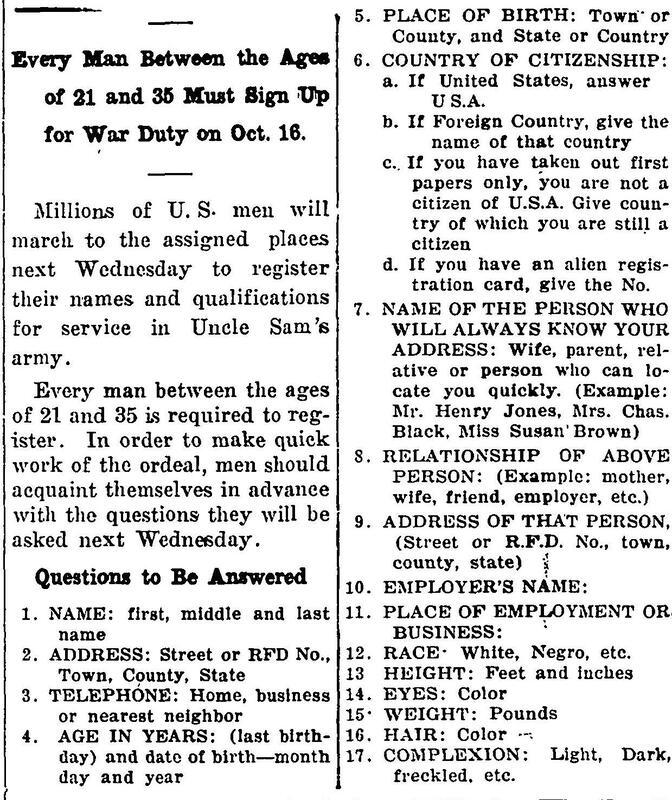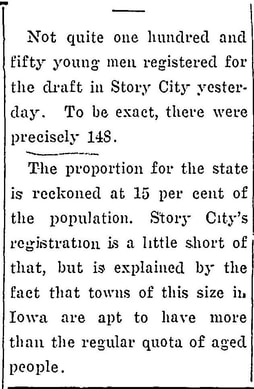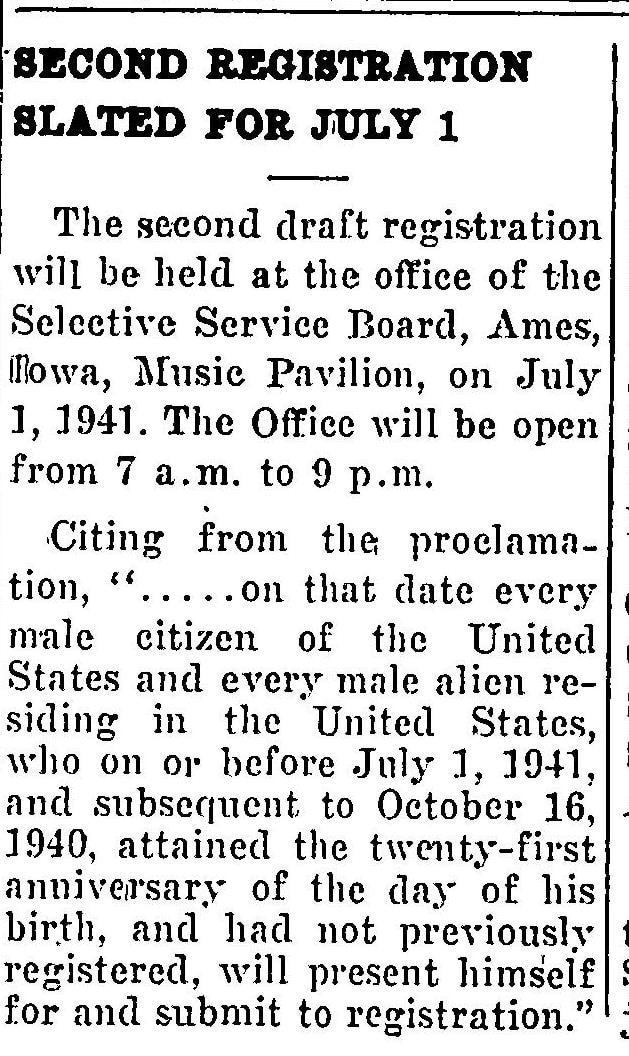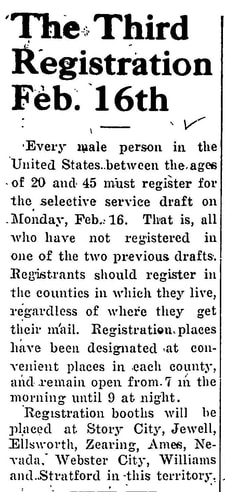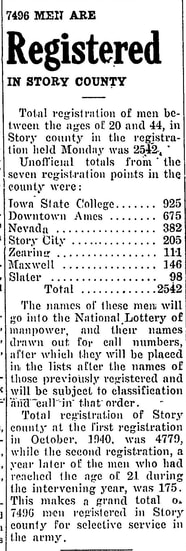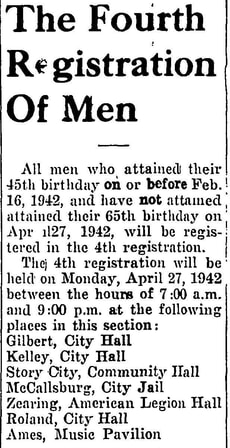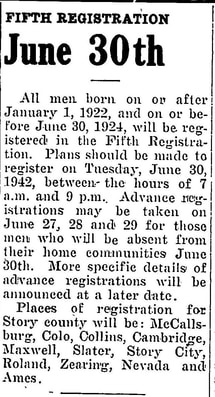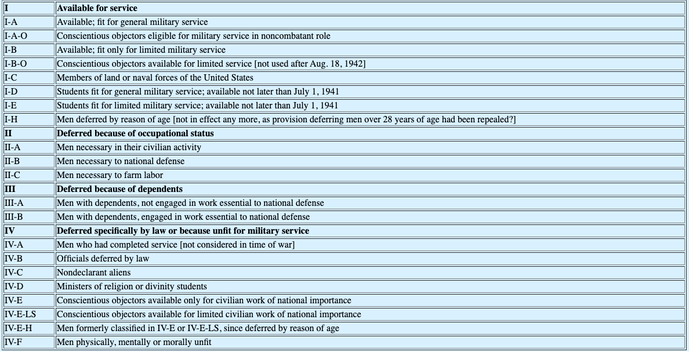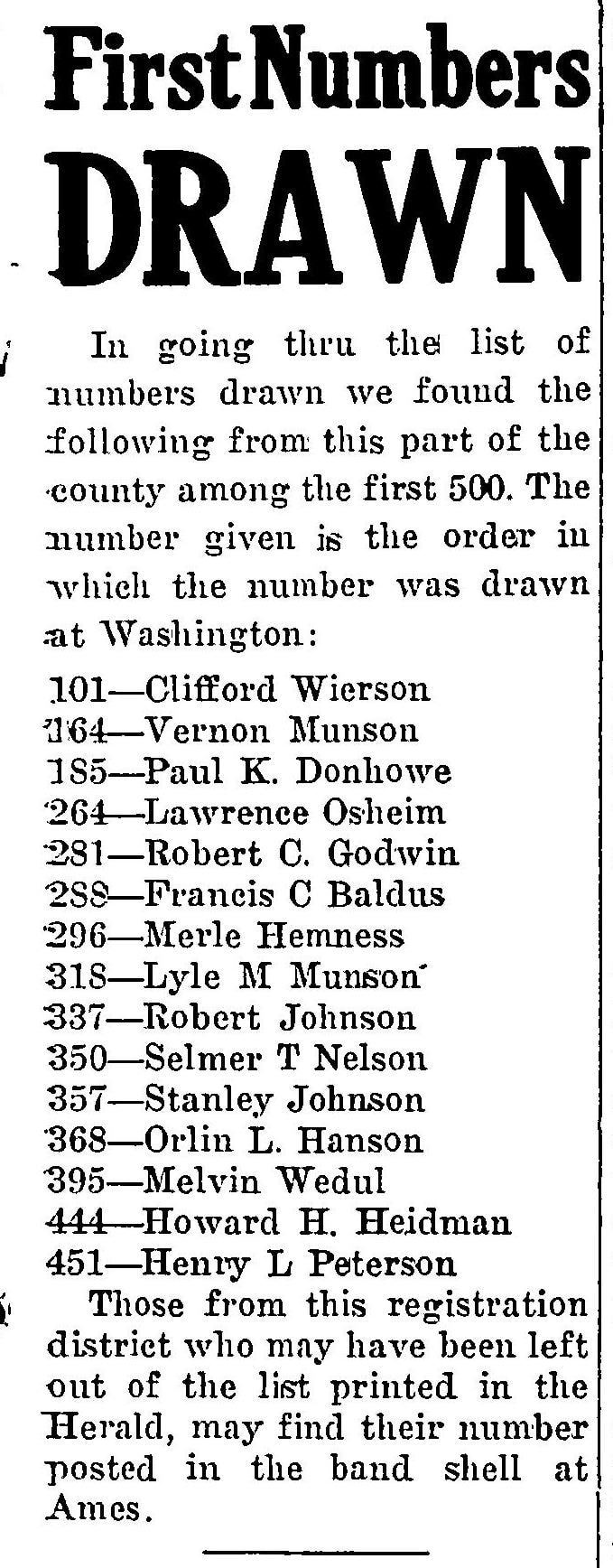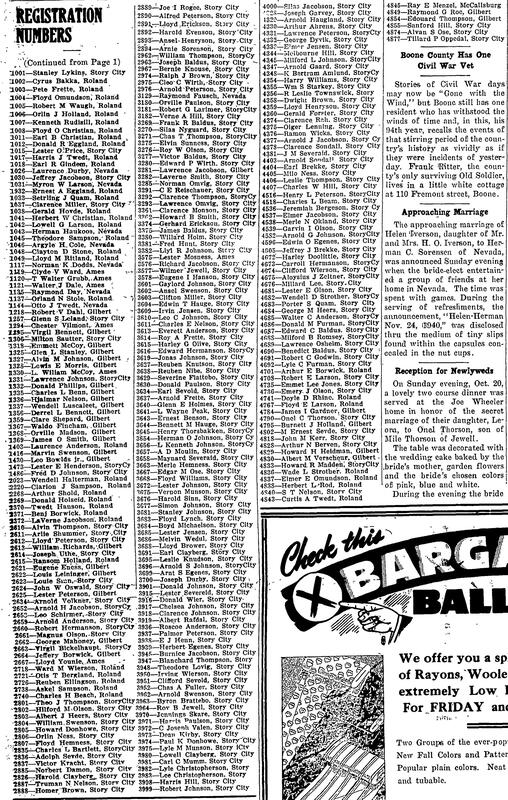Selective Service in story city
The Second World War marked the first time that a peacetime draft had ever been instituted in the United States. Enacted on September 16, 1940, the Selective Training and Service Act was responsible for the process of selecting men for induction into military service, from the initial registration to the actual delivery of men to military training camps. Throughout the duration of the war there were six draft registrations. By the end of the war, fifty million American men had registered for the draft, and ten million had been drafted.
On October 10, 1940, the Story City Herald announced the first call for men to register for the draft. Men between the ages of 21 and 35 were required to register for the draft six days later on October 16, 1940. Iowa governor George A. Wilson also submitted the names of men that would be suitable to serve on draft boards in their respective counties, as well as an appeal attorney and a physician. The Story County Draft Board consisted of I. E. Erickson of Ames, R. A. Sweet of Story City, John Moran of Nevada, attorney C. G. Lee of Ames, and physician Dr. W. B. Armstrong of Ames. These men would decide whether the registered men would be deferred or assigned to immediate military service. The day after the first draft registration, October 17, 1940, the Story City Herald reported that 148 men from Story City had registered.
On October 10, 1940, the Story City Herald announced the first call for men to register for the draft. Men between the ages of 21 and 35 were required to register for the draft six days later on October 16, 1940. Iowa governor George A. Wilson also submitted the names of men that would be suitable to serve on draft boards in their respective counties, as well as an appeal attorney and a physician. The Story County Draft Board consisted of I. E. Erickson of Ames, R. A. Sweet of Story City, John Moran of Nevada, attorney C. G. Lee of Ames, and physician Dr. W. B. Armstrong of Ames. These men would decide whether the registered men would be deferred or assigned to immediate military service. The day after the first draft registration, October 17, 1940, the Story City Herald reported that 148 men from Story City had registered.
The second draft registration occurred on July 1, 1941, when men who had reached their 21st birthday since the last draft registration were required to register. The Story City Herald reported on July 10, 1941, that eleven men from Story City had registered, as well as many others from surrounding communities.
The third registration occurred on February 16, 1942. Men between the ages of 20 to 45 were required to register for the draft, requiring men who had not registered in the first two drafts to register themselves.
On April 27, 1942, the fourth draft registration was held. Known as the "Old Man's Draft", men between 45 and 64 were required to register and provide a list of their skills. These men would not be used for military service. Their registration was considered an inventory of the manpower that the United States could repurpose for war work, freeing up younger men for active military service. Story City registered 262 men in the "Old Man's Draft".
On June 30, 1942, the fifth registration was held for men between the ages of 18 and 20.
The sixth and final draft registration was held between December 10th and 31st in 1942. Men who reached the age of 18 after November 12, 1942 were required to register.
When a man registered, he would complete a questionnaire to fill out his draft card and be reviewed by the registration board to be given his classification. If his lottery number was selected, he would then appear for his physical exam by the physician on the local draft board. A man could claim exemptions from military service for physical disabilities, work in other sectors of the war, education, or have certain types of dependents that gave him an exemption. Conscientious objectors also were given exemptions, although they were usually redirected to another non-combative form of service. If a man did not have any exemptions, he would undergo a physical examination and then leave for service shortly after. Men were required to serve until the conflict was over, plus an additional six months, or until they received their discharge. Below is a table of all the classifications for draftees that categorized men into their ability to serve in a combative or non-combative role, or their inability to serve based on a recognized exemption.
In Story City, young men’s lottery numbers were regularly published in the Story City Herald. Below are a few examples of articles that the Story City Herald printed when young men were drafted.
Sources
Fold 3, WWII Draft Registration Cards, https://www.fold3.com/title/816/wwii-draft-registration-cards.
National World War II Museum, Research Starters: The Draft and WWII,https://www.nationalww2museum.org/students-teachers/student-resources/.
Story City Herald Newspaper, available through the Digital Archives of the Bertha Bartlett Public Library. Retrieved from http://berthabartlett.advantage-preservation.com/.
Fold 3, WWII Draft Registration Cards, https://www.fold3.com/title/816/wwii-draft-registration-cards.
National World War II Museum, Research Starters: The Draft and WWII,
Story City Herald Newspaper, available through the Digital Archives of the Bertha Bartlett Public Library. Retrieved from http://berthabartlett.advantage-preservation.com/.

